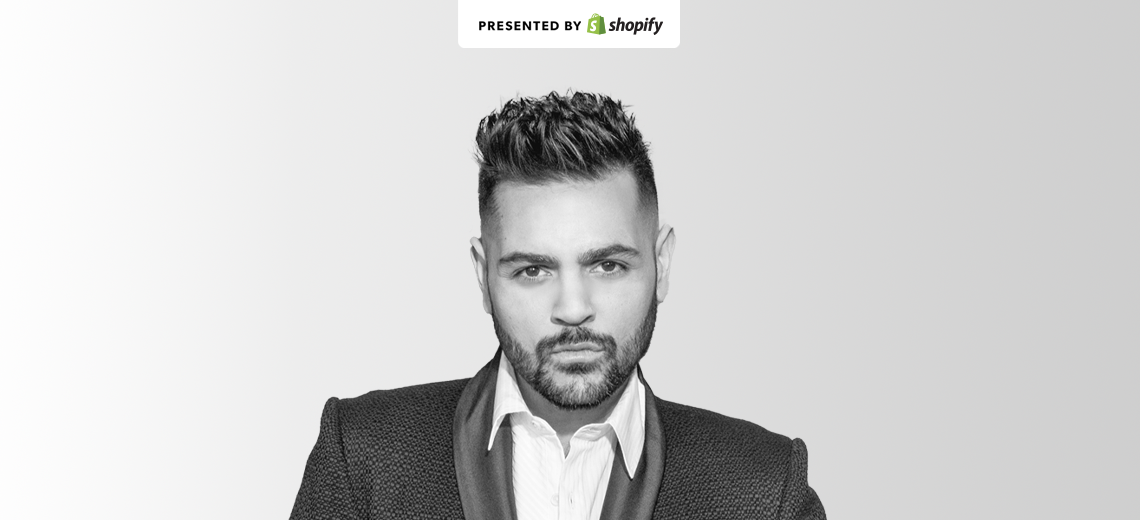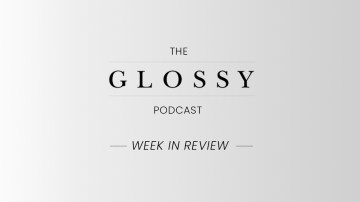This is an episode of the Glossy Fashion Podcast, which features candid conversations about how today’s trends are shaping the future of the fashion industry. More from the series →
Subscribe: Apple Podcasts • Spotify
Fashion designer Michael Costello came onto the scene by way of “Project Runway” in 2010. Now, his namesake brand, best known for glamorous, sexy dresses and inclusive sizes, is sold at Saks Fifth Avenue. Plus, he’s behind Revolve’s best-selling brand.
“I have the best of both worlds,” he said, regarding designing for both his namesake brand and Revolve. “I get to create fantasy and high-end glamour, and really live out the things that come into my mind and that I dream about, which is the couture and over-the-top, gorgeous gowns. But I also get to make things that everyone can wear, [for Revolve],” he said.
Costello has sold at Revolve for the past six years, creating 120-180 exclusive pieces for the retailer per month.
And in 2022, his brand was picked up by Saks, which he calls his “I made it” moment.
In September, Costello will be participating in New York Fashion Week, after stepping away for three seasons before taking part in Revolve Gallery in September 2022. He plans to leverage a more intimate show format than in seasons past, to cater to long-term customers and buyers. “We want to see the impact this time. Before it was all for fun,” he said.
Below are additional highlights of the podcast, lightly edited for clarity.
‘Project Runway’ as a launch pad
“I had hit a wall in my career. … I’d already been able to dress Paris Hilton, Mischa Barton, Salma Hayek and Mariah Carey before ‘Project Runway’ and before the Instagram popularity. So I put together a really extensive portfolio, and I said, ‘You know what? I’m going to do it.’ I bought fabric from Walmart for literally $1 a yard, and I created my samples in three days before the audition. And a friend of mine helped me make an audition tape. I sent it in, and they were blown away. They told me to come down for the live casting. I went, I prayed, I got a flat tire. I took one of my best friends with me, and she modeled the dresses. … And Tim Gunn said, ‘Michael, you’ve already dressed some really great people. Why ‘Project Runway?” And I said, ‘Why not? I need something that’s gonna catapult me into everyone’s living room every night on Thursday at 8 p.m. for people to see my talent. … I need to use your show to get that platform so that I can get more doors open to me — because dressing the celebrities for free ain’t paying the bills, and it really ain’t working for me. So I need something else.’ And it really did open up a lot of doors. I was really happy with the outcome of the show. Of course, I didn’t win. But I became one of, if not the biggest breakout star, next to Christian Siriano, from the whole franchise. That’s huge. I beat out 22,000 contestants that competed in Los Angeles to make it on the show.”
The power of the celebrity endorsement
“These women, like Kylie Jenner and Chantel Jeffries, have such a huge outreach. And we get that they’re with management teams. But what they don’t understand is that we work so hard as designers, and we stop everything that we’re doing, not just for the placement, but in hopes that they will at least say, ‘Thank you’ [in a post]. In today’s society, Instagram posting, credits, mentions, tags and hashtags are so valued and so sought after. It’s so sad when they tag the major high-end designers like Balmain, Versace, Gucci and Prabal Gurung — all the designers who really do not need the placement or really do not need the advertisement or the mention. … [Meanwhile] they forget the people who slave countless days and nights working around the clock to create this one look, in hopes that they will tag or credit or mention them. And then they get really rude with you if you ask for a little bit of credit here and there.”
The ‘I made it’ moment
“A really great friend made the introduction, and [Saks] had just wanted to see a line sheet and a lookbook. But I was so nervous that I developed my own [Saks] collection in 16 days. I made 32 looks for them. And we shot it, filmed it, videoed it, and made a lookbook and a line sheet in 16 days and presented it to them. We said, ‘Look, this is what we made for you guys.’ While most brands were sending them digital sketches or samples of what they did, I wanted to wow them and impress them. They told me they were so blown away and so fascinated by the presentation; they were thrilled. And they put in a huge order for four stores and the e-commerce [site]. I was so excited because you work so hard in your career for these types of moments, and it’s almost like you work so hard and you never feel relevant. You never feel like you’ve completed something or like you’re a major player in the industry until you’re sold at a high-end, well-known department store. … When you walk into a department store and you see your garments on a rack, and you’re right next to an iconic brand like Halston — who I’ve been a fan of since I was a kid — it’s like a huge smack in the face to you, and you’re like, ‘Wow, this is my ‘I made it’ moment.’ And it really was for me. … Fourteen years ago, I posted something on Facebook at a Saks Fifth Avenue store, and I said, ‘One day, I’ll be next to here. One day, I’ll be in this department store.’ And I was passing by the Halston dresses. … I am a minority. … And people don’t understand what these kinds of opportunities mean to someone like me.”




